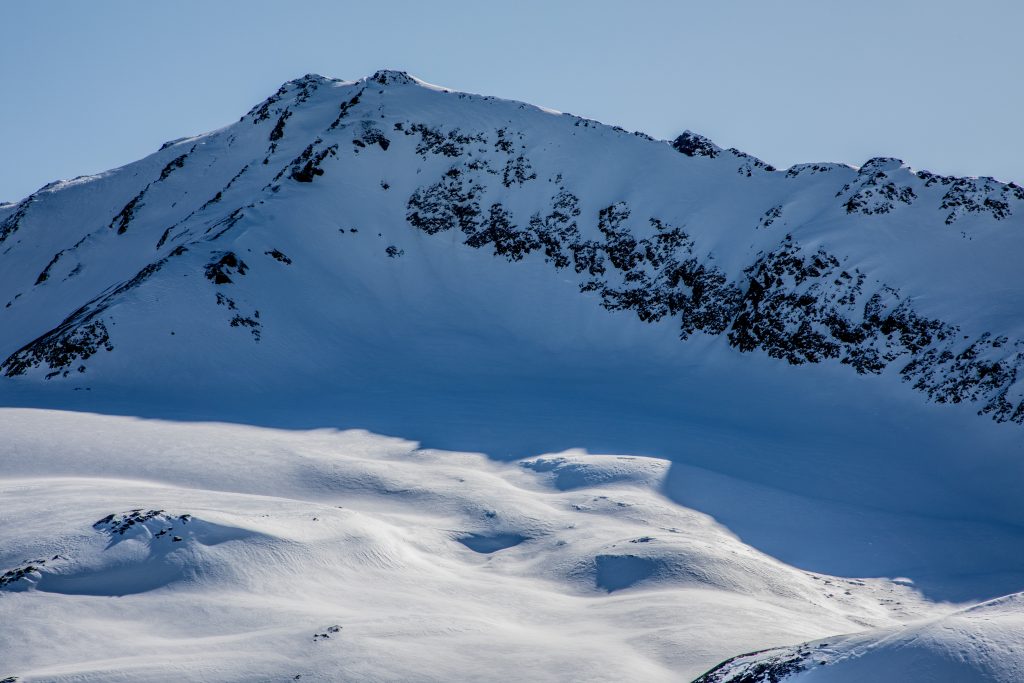As we enter the last week of Marvelous March, we are in a holding pattern of sorts avalanche-wise. The snowpack structure remains poor. Various weak layers in the middle and the base of the pack are persisting, keeping the avalanche danger at MODERATE for triggering a hard slab avalanche 2-4 feet thick. As time passes, the likelihood of triggering one of these dangerous avalanches is decreasing, but with the high consequences conservative terrain choices continue to be recommended. Many folks are taking advantage of the hard-pack snow conditions by long tours and exploring. With this however, keep in mind this avalanche problem is tricky and triggering a slab from the flats below a slope is possible. Being aware of runout zones and considering how far an avalanche could send debris should be in the forefront of our minds this spring.
In case you are just tuning in, our problem layers are from January. They are facets sitting on a slick melt/freeze crust at the mid elevations and facets mixed with buried surface hoar at the upper elevations. The slab on top is 2-4′ thick and very hard due to a strong Northwest wind event that ended last Thursday. This wind event caused unusual loading patterns and created a situation where the typical windward slopes (thinner weaker snow) are more loaded and avalanches could be triggered in unexpected places. To show this, observers have found poor structure along scoured ridges and under sastrugi. The last avalanche we know of was Friday (three days ago) in the Girdwood Valley and was remotely triggered from 200 yards away.
*Keep in mind that the snowpack may not show any obvious signs before the slope releases. It may be the 10th skier or snowmachiner onto a slope that finds a thin part of the snowpack (a trigger point). It is always good for us to take a moment and visualize the consequences if the slope are exposed to does slide.
This photo is looking up at the Southwest face of Sunburst. This old avalanche was triggered exactly two weeks ago today after the last snowfall event. On that Monday, a storm ended that brought 2-3′ of new snow to Turnagain. This snow has now settled to around a foot or less and experienced much wind and sun damage over the past two weeks.

Pastoral Peak on the left and Kickstep on the right. The mountains look deceptively stable with a hard wind and sun affected surface.


–



